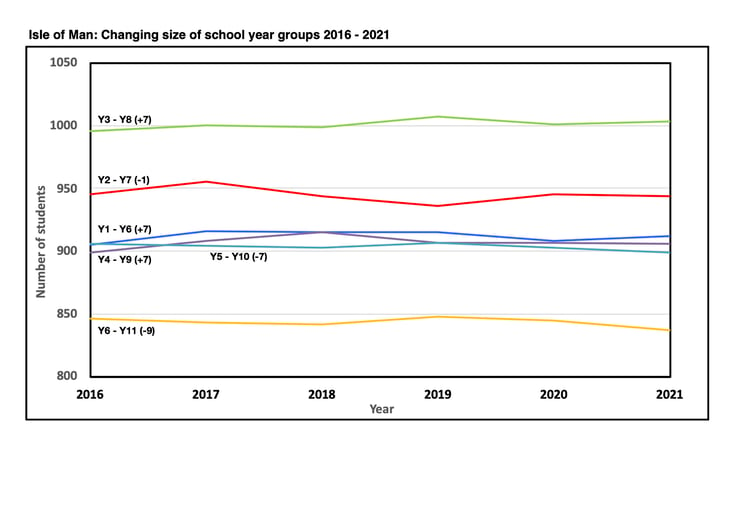Statistician Paul Craine has published an analysis of the make-up of 2021’s new school years.
Mr Craine, who is a candidate for Legislative Council, said the year groups reflect the ’remarkable’ 35.5% decline in the number of births in the island.
But the numerical composition of the year groups has remained largely stable.
This September, the largest compulsory school year group across all primary and secondary schools was Year 8 (ages 12 and 13) with 1,003 students.
The smallest year group was Year 1 (ages five and six) with 785 across all island primary schools.
’Based on the declining births, we can expect the number of pupils entering our primary schools to decline for at least another five years,’ said Mr Craine.
School rolls data also show that as Years 1 to 6 (Year 6 is ages 10 and 11, the last year of primary) passed up through the schools in 2016 to become Years 7 to 11 in September 2021, the number of pupils in this group hardly changed.
Over the five-year period since 2016, three year groups experienced small increases (current Years 6, 8 and 9) and three year groups showed small decreases (current Years 7, 10 and 11).
Overall there was a net increase of just four students over a five-year period in a group containing almost 5,500 students. That represents growth of 0.07%.
data
A closer look at the data shows that this student group actually peaked in 2017 and has declined by 25 since that date.
As students move up through the years, gains or losses can only be accounted for by migration to/from the island or from students moving between government schools to private or home education.
In broader statistics for the whole island, the government population estimates for the end of September 2021 (third quarter) were provided by the government’s Economic Affairs Division in late October.
Mr Craine noted that the data suggests that the island’s resident population may have peaked in June this year at 84,829 before falling back to 84,746.
He went on to say that the under 65 population is shown to be flatlining, and that the school rolls data shows that any net migration gain cannot have come from this population.
In other words, the island’s aging population remains an issue and the data from schools shows that it isn’t getting better any time soon.
Mr Craine referred to a fall of nearly 3,400 (4.9%) in the under 65 population in five years.
This is shown by the red line in the second graph serves as ’a stark reminder’ of the extent of this decline.
In sharp contrast, the blue line shows the increase in the population aged over 65 between 2011 and 2016 - an increase of over 2,200 (14.8%) over the same period.
These figures are from census counts.
The blue and red lines on the graph after 2016 are government estimates.
The number of people aged over 65 years (shown in blue) is now believed to have reached over 18,600.
Twenty-two percent of the estimated total population is believed to be aged over 65, which would keep the Isle of Man in the group of countries with the oldest populations along with Japan, Italy, Portugal, Finland, Germany and Greece.
The estimated number of people aged under 65 years (in red) has been flatlining since 2016.
Mr Craine said there appears to be 16 fewer people aged under 65 than there were five years ago. Ten years on from the 2011 Census, the estimates suggest that the under 65 population remains over 3,400 smaller than it was.





Comments
This article has no comments yet. Be the first to leave a comment.